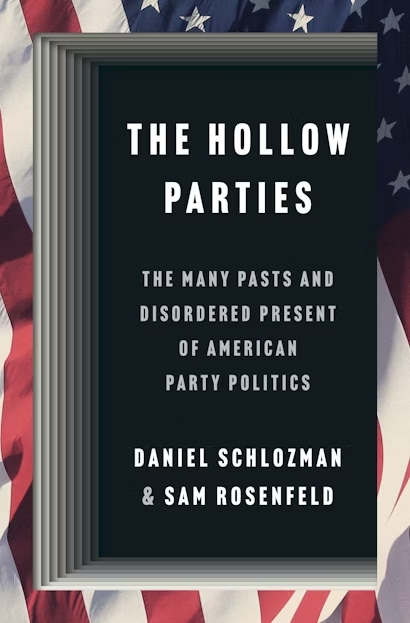The six party strands occur and reoccur in this history. In the accommodationist strand, parties are viewed as collections of political professionals, making deals, organizing blocs of voters, trading favors, mediating disputes—essentially, accommodating the many people in or potentially in the party. Think Tammany Hall. The anti-party strand is visible among opponents of both the spirit and the organization of parties. The Progressive movement and the modern technocrat are exemplars.
The pro-capital strand is about how politics can serve the interests of business. It can be seen from free labor Republicans, who served Northern industries, to Reaganite Republicans. The policy-reform strand believes that parties solve problems. It flourished under the New Deal Democrats. In the radical strand, parties transform society to make it more equal. The egalitarian goals of today’s left-wing Democrats represent this. Finally, the populist strand divides the country into “us” and “them.” Its orientation is not to build coalitions but to fight enemies. The contemporary manifestations are obvious.
Viewed this way, the history of U.S. political parties is not one of discrete eras or “party systems.” Instead, different parties and party factions embody different and usually multiple strands. In the 1850s and ’60s, the nascent Republican Party project combined elements of four strands: accommodationist (in its patronage politics), pro-capital (via the support of Northern industry), policy-reform (via accomplishments such as funding land-grant colleges), and radical (visible in the Radical Republicans’ push for Black Americans’ rights). More recently, longtime “Democratic institutionalists” such as Nancy Pelosi and Joe Biden are both accommodationists and policy reformers. The modern conservative movement—what Schlozman and Rosenfeld call the “Long New Right”—channels the pro-capital and populist strands.
These party strands help the authors draw fascinating historical parallels. For example, Schlozman and Rosenfeld describe a “politics made by experts in service to a common good” and a “benevolent technocracy” that were endemic in both the Progressive movement and, a hundred years later, Obama-era liberalism. Even more, the Progressive movement’s push to empower “enlightened leadership” and ordinary plebiscites over party regulars like the leaders of the big-city political machines shows up again in “the Trump voter yearning for a savior to clean up the politicians’ mess.”
